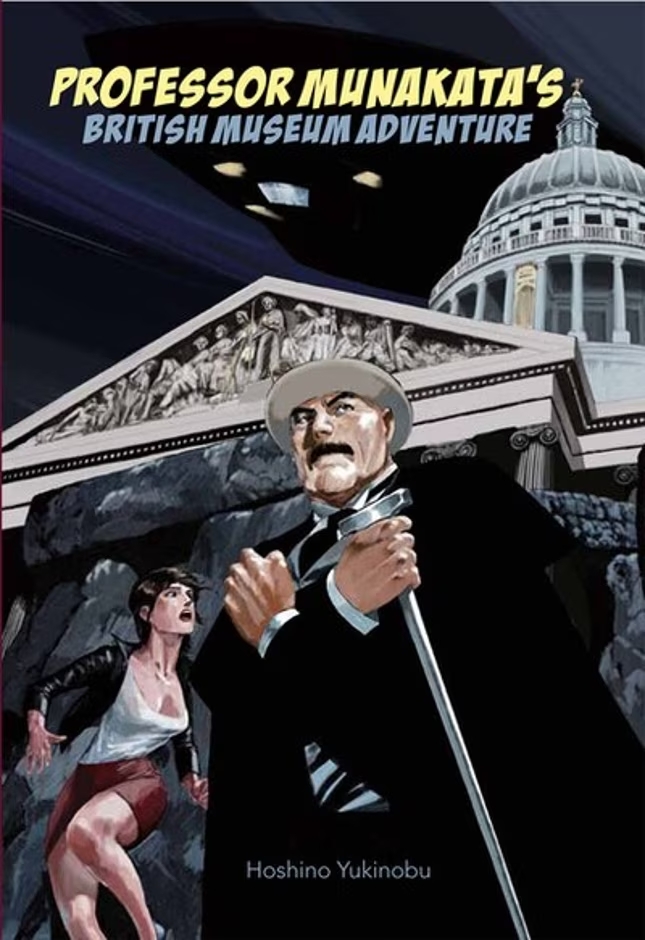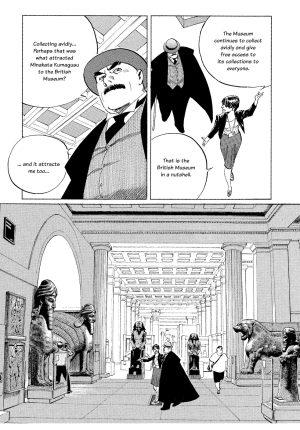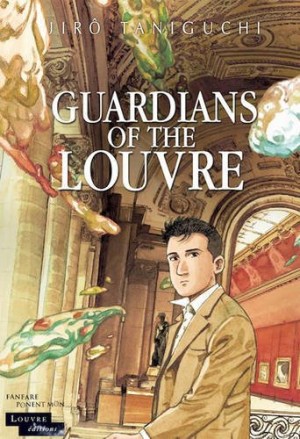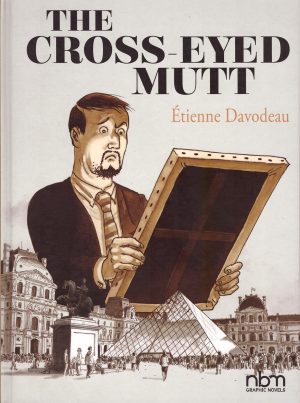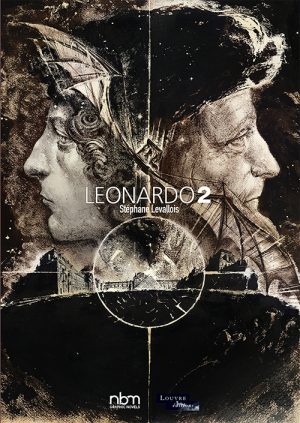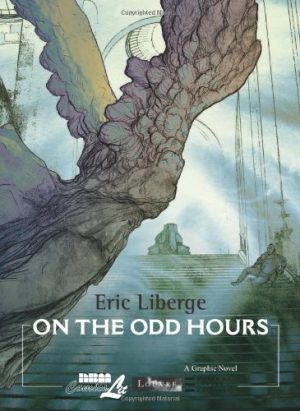Review by Frank Plowright
In France, the prestigious Louvre art museum commissions an annual graphic novel celebrating the museum and its collection (see recommendations). This may be the only equivalent for the British Museum, but it’s prefaced by an author interview, and an essay placing the history of manga and the museum’s own collection into perspective.
Hoshino Yukinobu had been producing the mysteries solved by Professor Munakata since 1994, so uses his own character for an investigation into strange events at the British Museum. Those concerned at how the museum acquired much of its stock during empire days will be happy that legitimate claims for return are not a subject Yukinobu shies away from, indeed the matter forms the basis of his plot. Munakata’s visit coincides with the monoliths of Stonehenge disappearing, with replicas of the pawns from the museum’s Lewis chessmen left in their place. Equivalents are placed by the museum’s contentious displays. A decade before it was actually discovered multiple items have been stolen from the museum’s collection, Yukinobu also considers that possibility.
Yukinobu spent considerable time at the museum, and items from the collection feature throughout, meticulously rendered in black and white, as are London streets and landmarks. His research is deep, resulting in too many places where a desire to show off his findings is shoehorned awkwardly into the ongoing mystery, associated discoveries in the Stonehenge area one example.
However, for all the good intentions, meticulous research and precise art, British Museum Adventure is dull. Munakata has the slimmest of personalities, his assigned assistant Chris is gushy, respectful and attentive, but more a sounding board, and no-one else has a significant role. The mystery of who’s responsible and their motives isn’t enough to sustain interest until halfway through when the pace picks up a little. There’s none of the charm, eccentricity or humour of Naoki Urusawa’s dip into similar territory with Master Keaton, and Urusawa’s stories are far shorter.
It’s further impaired by a translation that’s far too literal, prioritising explanation rather than naturalistic dialogue, and a few irritations, such as repeated dialogue resulting from Chris translating Munakata’s Japanese. Yet a complex plot is well structured on an expansive scale, if a little improbable at times without ever straying too far into the fantastic. It only collapses under its own weight at the end when all is revealed, at which point most readers will ask why such a public display was contrived when the ultimate aim could have been achieved covertly without attracting attention. It leaves impeccable art accompanying a plot that takes too long to unwind, and lacks credibility when all is known.
Even with the massive expansion of translated manga in the 21st century no further volumes of Professor Munakata have been made available in English, although Yukinobu’s 2001 Nights was serialised.
